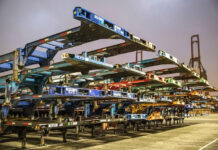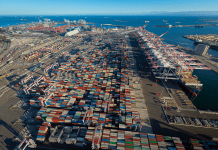
Hyundai Merchant Marine is expected to shift its cargo handling in Gwangyang port, from Hutchison Ports’ terminal, to Gwangyang West Container Terminal (GWCT).
South Korea’s flagship container carrier is strengthening its collaboration with compatriot feeder operator Sinokor Merchant Marine, which has been using GWCT, which is operated by a wholly-owned subsidiary of South Korean chaebol CJ Corporation.
The company operating the Hutchison terminal, Korea International Terminals Ltd, is a joint venture between Hutchison Ports and HMM, which had a 5% stake.
However, in order to strengthen its ties with Sinokor, which is HMM’s partner in K2 intra-Asia shipping consortium, HMM is divesting its stake in Korea International Terminals.
HMM said: “Most of our joint ventures with Hutchison Ports ended at the end of last year. We still have some overseas joint ventures with Hutchison Ports and these will end in due course.”
HMM narrowly escaped bankruptcy in 2016, after the Hyundai Group sold off several assets and subsidiaries to raise funds, and renegotiated rates for period-chartered tonnage. As a result, the Hyundai Group lost its status as HMM’s largest shareholder, after Korea Development Bank and other creditor banks entered a debt-for-equity swap.
Under the Hyundai Group, HMM formed friendly relations with Hutchison Ports as the company embarked on a self-rescue scheme. In June 2014, Market Vantage, a Hong Kong entity believed to be controlled by Hutchison Ports, bought 6.19 million of HMM’s shares, injecting US$57.7 million into the liner operator. Due to this, a Hutchison Ports executive was among HMM’s independent directors when the company was part of Hyundai Group.
Meanwhile, as Yeosu-Gwangyang Port Authority begins discussions to integrate operations with GWCT, Hutchison Ports has expressed an interest to participate in the process, possibly as a result of HMM’s departure from Hutchison Ports’ terminal.
Gwangyang is South Korea’s second busiest container port, after Busan.
Martina Li,
Asia Corespodent





